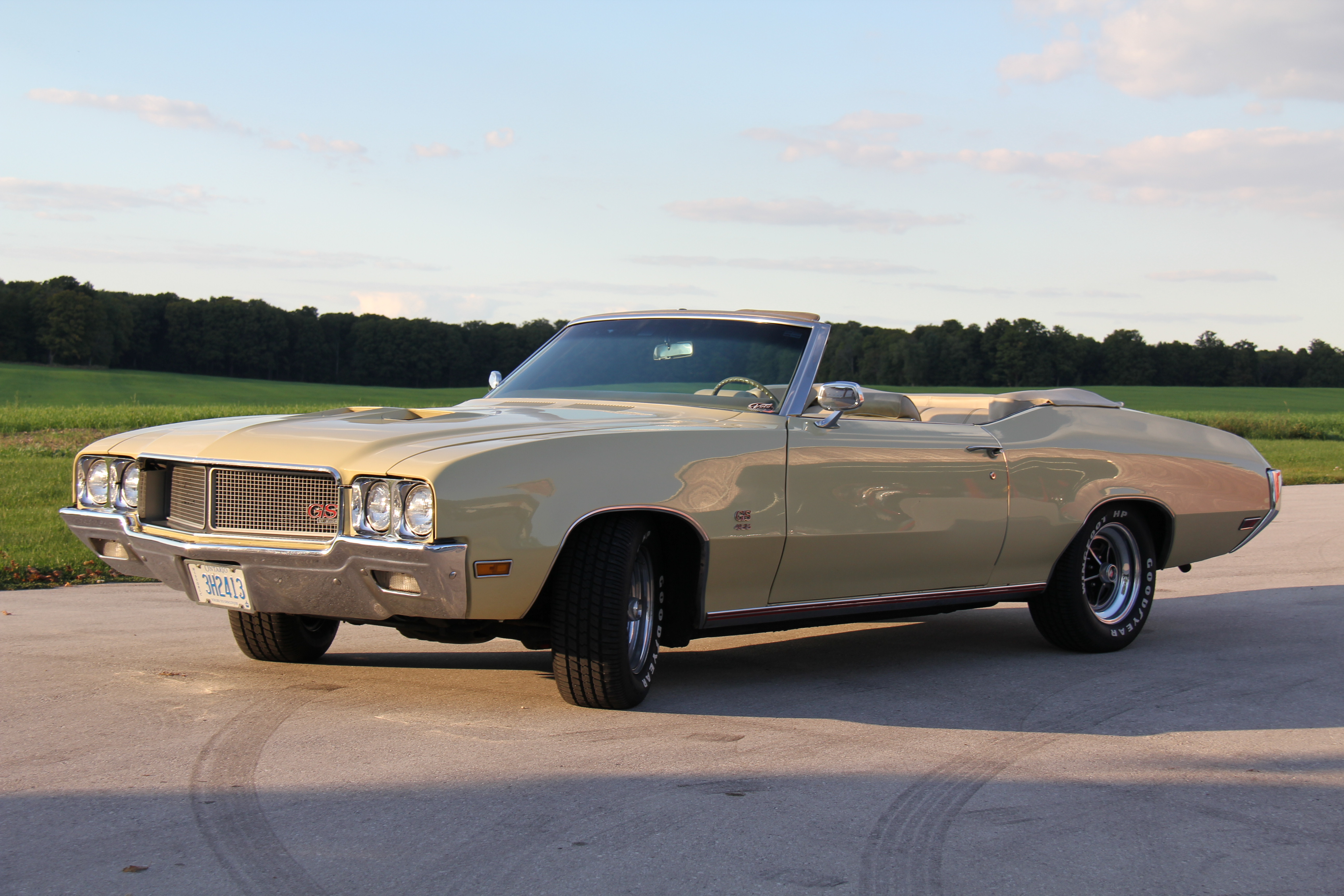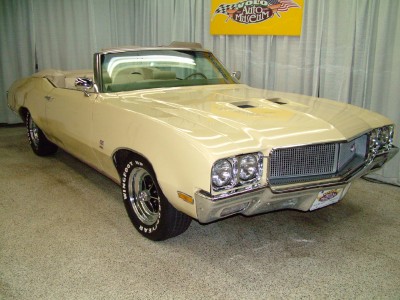1970 BUICK GS 455 CONVERTIBLE NO 67
THIS IS A NUMBERS MATCHING , DOCUMENTED, 3 OWNER GS 455
In 1970 General Motors finally allowed their Divisions to install the massive 455 cu in engine in mid-sized cars. Buicks entry in this field became the GS455 and the GS455 Stage 1. The result is what many consider the fastest of the muscle cars with just that touch of Buick luxury.
This car has:
455CU IN/ 510 FT LBS TORQUE POWER STEERING POWER BRAKES
FACTORY GAUGES CLOCK TILT STEERING WHEEL
SPORT WHEEL RARE SHOLDER BELTS POWER TOP
15" GS MAGS TURBO 400 AUTOMATIC
The 1970 Buick GSX has arguably the most extensive list of standard high performance features of any classic era muscle car.
1970 Buick GS 455
Muscle car mania during the 1960’s in North America reached its peak in 1970. “Big Daddy” in this regard was General Motors who finally allowed their Divisions to install engines larger than 400 cid in their intermediate “A” Body platforms. So in quick succession we saw GTO’s (455 cid), Chevelles (454 cid) and Cutlass 442’s (455 cid) now competing straight up with Chrysler’s legendary (426 cid 425 hp) Hemi engines. But the “Leader of the Pack” turned out to be Buick which turned out a remarkable 455 cid, 350 HP engine featuring 510 ft lbs of torque. Who knew? And this wasn’t a stripped down shell meant to go fast. It was designed and trimmed with all the amenities Buick was known for including automatic trans, air conditioning, power steering and power brakes with a monster engine. So, you go faster than anyone else and do it in complete comfort!
The GS 455 was built around their own Buick 455 cid engine. This engine was unique among the GM giants. As Hemmings Muscle Machines recounts: “The Buick version was really quite different. . . instead of altering the stroke, Buick honed out the cylinders of the 430 CID Buick Wildcat engine. For this reason GM considered it a thin-walled big block. The advantage of this casting design is a significant drop in weight over other 455 versions.
“In fact, the engine actually weighed close to 150 pounds less than the legendary 454 big block that Chevy used. This weight reduction compensated for slightly lower horsepower output from the Buick version. They (conservatively) rated the standard issue 455 at 350 HP and the high performance Stage 1 version at 360 HP.
“Impressive even in base form, the base 455-cu-in V-8 was bestowed with a cast nodular-iron crankshaft linked to cast-aluminum pistons via forged-steel connecting rods. Each piston was fitted into a 3.90-inch bore and traveled 4.312inches . . . while a redesigned dual-snorkel air induction system funneled atmosphere directly into a Rochester Quadrajet four-barrel carburetor . . . given a factory rating of 350 hp, even this figure seemed conservative to those who took the wheel.
“According to the Buick Service Manual bulletin issued on February 6, 1970, a puff of smoke while starting either 455 in acceptable. This is because the exhaust valves do not utilize a valve stem seal, but rather, a scraper which pushed oil up the stem, preventing excess oil from entering the combustion chamber. When the engine is shut off, any oil remaining on the stem would seep past the scraper into the chamber. The bulletin went on to say this minute burn-off would not impact oil consumption.”
Hemmings went on to say, “The new for 1970 455 was a foot-full. Consider this: In the muscle car vernacular, Buick’s 455 stood as the most powerful domestic engine in terms of torque output for the next 22 years, bested only when Dodge introduced the Viper in 1992.”
All that and they had a great look and a wonderful ride. The two 1970 Buick GS 455’s in the Lang Collection are truly wolves in sheep’s clothing. Don’t get too close!


